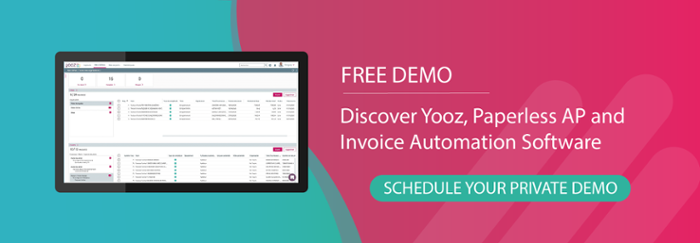Accounts Payable (AP) remains one of finance's most time-consuming and labour-intensive tasks. In the digital age, the day-to-day jobs needed to operate an efficient AP function - things such as data entry, invoice processing, and reporting - can, and should, be better utilised by technology, not humans. And although accounts payable automation is here to save teams time, money, and resources, only a small fraction of businesses are actively using the technology.
According to a recent survey of UK finance leaders, 17% are using an Enterprise Resource Platform (ERP) alongside AP automation, 15% are using automated invoice processing, and 5% are using some form of semi-automated solution, such as Optical Character Recognition (OCR). Many (13%) are still using manual processes or Excel spreadsheets. With the latter in mind no wonder then that AP teams are spending around 27 hours on average managing vendor invoices each month, with the average approval time of invoices around 18 hours.
In the current somewhat volatile financial climate, this needs to improve. With a recession looming and inflation continuing to rise, finance teams need to have full visibility of the road ahead and as much control over their invoice workflow processes as possible. To do this, AP departments need technology that grows with the business. With other areas embracing automation - such as marketing and sales - isn’t it about time accounting and finance teams also got their fair share?

Why do companies use automated accounts payable tools?
Not only are manual processes negatively impacting the growth of the business, but they’re also becoming severely detrimental to morale and productivity. The risk of employees suffering from burnout increases as they become trapped under a growing pile of unpaid invoices regardless of their efforts. Add to that the constant pressure of business leaders asking for up-to-date reports and suppliers/vendors wondering when they are going to be paid, and you have a potential recipe for disaster.
Accounts payable automation - the process of implementing technology to minimise and sometimes completely remove the need for human intervention - can be the lifeline AP departments need in situations like these. By eliminating repetitive and mundane tasks such as data entry and invoice scanning, businesses can improve the productivity and accuracy of the finance department while breathing new life into the role of the accounts payable professional.
Using a combination of technologies such as Artificial Intelligence (AI), Machine Learning (ML), and even deep learning, accounts payable automation starts with a simple email from the vendor or supplier to the finance department. By attaching an invoice to the email - such as a Word doc, PDF, or other electronic format - the technology can scan the information provided on the document and record it into the business’ accounting or ERP system.
From there, AP automation can check the invoice for any required but missing information - such as a purchase order (PO) number, VAT, or address - and notify a designated person to double-check the flagged invoice. Not only does this already reduce the need for intervention, it is also important for spotting potential cases of fraud. Issues are caught at the beginning of the process with any suspicious activity immediately flagged for review before any payments are sent.
If the invoice is correct, it will be automatically sent for approval to the relevant finance manager, with payment sent shortly afterwards. Used over time, the intelligence of the software system means it will learn from previous invoices to further improve speed and accuracy. Overall, by implementing accounts payable automation, businesses and finance departments can reduce the need for error-prone manual intervention by as much as 80 percent, reduce the cost for every invoice processed, and increase productivity and security.
What makes the perfect accounts payable automation tool?
So we know that AP automation tools are highly beneficial to businesses and finance departments, but when looking to adopt a new software system, what exactly should decision-makers be on the lookout for? In a world full of technology companies, how can you tell the difference between the average, the good, and the great? Below are three points to consider before implementing an automated AP tool:
-
Security:
Any new software system needs to be secure, but especially one for any installed within the finance department. Staff here have access to highly sensitive and important information which, in the wrong hands, can be disastrous. The chances of fraud increase, for example, for businesses that employ remote staff or mobile technology, so you need to know that any new system will be able to not just identify when this happens, but also stop it in its tracks before its too late. What’s more, with finance data held in the cloud, you can ensure that not only is it secure but also readily accessible for auditing purposes. -
Integration:
Custom integrations can take time, are messy, and don’t always work as well as first hoped. So, when looking into accounts payable automation tools, make sure that the system integrates with whichever accounting or ERP system you’re currently using. Plus, ask questions about the timescale of the integration and when teams can be up and running. The faster staff are up to scratch with the software, the faster you can realise the benefits of using it. It’s also worth asking if any specialised training is needed to run the software, as you want an easy-to-use system that can be used by all staff no matter what their experience level. -
Reporting:
As we mentioned before, accounts payable teams need access to financial data in order to gain the visibility needed to weather the storm of financial uncertainty. This also needs to be sent in real-time, as month-end reports can be tedious as well as out-of-date the very next day. Provided with a full picture of the accounts payable process as well as real-time data means staff can produce accurate and timely reports on money coming out of the business as well as all important information on cash flow. Furthermore, having this data available means that management can make smarter decisions based on historical data.
Considering all three will help you know what to look for and why.
How can accounts payable automation tools transform a business?
Truth is, AP automation tools can dramatically transform how a business operates. By ditching manual, time-consuming tasks for technology that only requires human intervention when absolutely necessary, you can reduce the risk of error, fraud, and mistakes in payments while simultaneously streamlining the work of the finance department.
Also, with the technology working away in the background to make sure all of your payments are always on time and for the correct amount, it frees up staff from more mundane tasks. It’s these processes that cause issues like burnout, so removing them opens up more opportunities for staff to widen their roles, such as focusing on more time-intensive tasks, custom reporting, or customer relationship management.
Ultimately, by utilising AP automation tools, you can transform not just your business processes, but the way you do business. With customers, suppliers, and vendors all kept happy to be paid on time, you can focus more on the business-critical tasks that help build better operations, increase revenue, and sustain growth.
Unleashing the Power of AP Automation Tools for Business Transformation
Embracing Accounts Payable (AP) automation tools is a pivotal step in transforming your business operations. These tools bring about a paradigm shift in the way financial processes are managed, offering a host of benefits. Yooz streamlines the entire AP workflow by automating tasks such as invoice capture, data extraction, and approval workflows. This not only accelerates processing times but also minimizes the risk of errors associated with manual data entry. The integration of AP automation tools, like Yooz, empowers businesses to allocate resources more strategically, redirecting time and effort towards high-value tasks. By eliminating tedious manual processes, businesses can enhance accuracy, reduce operational costs, and gain a competitive edge in today's dynamic business landscape. The transformative impact of AP automation tools extends beyond efficiency gains, fostering improved compliance, transparency, and overall financial health for your organization.









